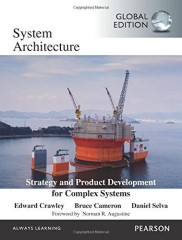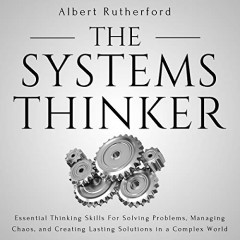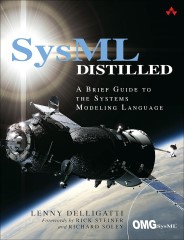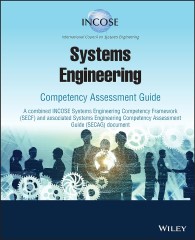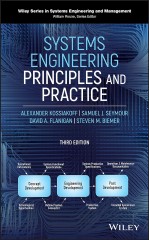In the complex world of systems engineering, one truth remains constant: the quality of your requirements directly determines the success of your project. Requirements serve as both foundation and blueprint—guiding decisions, setting expectations, and providing the benchmark against which success is measured.
Recent industry studies paint a stark picture. According to the Project Management Institute, 47% of unsuccessful projects fail primarily due to poor requirements management. Meanwhile, projects with excellent requirements practices are 2.5 times more likely to succeed. The financial implications are equally compelling: addressing a requirements error during the development phase typically costs 10 times more than fixing it during requirements definition, with this multiplier climbing to 100 times after deployment.
The V-Model of systems engineering illustrates why requirements hold this central position. This approach frames the entire engineering process as a V-shaped workflow where each development phase on the downward slope corresponds to a verification activity on the upward slope. At the deepest point of the V sits the actual system implementation—but notice what forms the entire left side of the V: requirements definition, elaboration, and analysis. This positioning is no accident. Each subsequent phase builds upon the requirements foundation, making its integrity essential to everything that follows.
As systems grow more complex and interconnected, with stakeholders spanning multiple disciplines and often multiple organizations, the challenge of getting requirements right has only intensified. Yet the fundamentals remain consistent across industries: understand what’s truly needed, document it clearly, validate it thoroughly, and manage it throughout the project lifecycle.
Table of Contents
- 1. Understanding the Requirements Landscape
- 2. The Requirements Definition Process: Step-by-Step
- 3. Practical Tips for Effective Requirements Definition
- 4. Overcoming Common Requirements Challenges
- 5. Technical Scoping for Robust Requirements
- 6. Requirements vs. Design: Maintaining the Distinction
- 7. Specialized Requirements Considerations
- 8. Requirements Elicitation Techniques
- Identifying Stakeholders
- 9. Requirements Management and Traceability
- 10. Verification and Validation Strategies
- 11. Industry-Specific Requirements Approaches
- 11. Conclusion: Building a Requirements-Focused Culture
1. Understanding the Requirements Landscape
Requirements are not monolithic. They exist in distinct categories, each serving a different purpose in defining what a system must accomplish, how it should behave, and what constraints it must operate within. Understanding these categories provides the framework needed for comprehensive requirements definition.
Operational Requirements: System Objectives
Operational requirements define what the system aims to achieve in its organizational context. These high-level statements connect system capabilities to business objectives and user needs. They answer the fundamental question: “What problem are we solving?”
Effective operational requirements establish clear boundaries around the system’s purpose without dictating how that purpose should be accomplished. Consider this example from a healthcare system: “The patient monitoring platform must enable clinical staff to identify deteriorating patients before critical thresholds are breached.” This statement defines success without constraining the solution approach.
Functional Requirements: System Capabilities
Functional requirements specify what the system must do—the features, functions, and behaviors it must provide. These requirements detail the system’s actions, responses, and processing capabilities.
Well-crafted functional requirements are specific, testable, and traceable to operational needs. They commonly follow the structure “The system shall [action] when [condition].” In practice, this might appear as: “The inventory management system shall automatically generate purchase orders when stock levels fall below predetermined thresholds.”
Non-Functional Requirements: Quality Attributes
While functional requirements define what a system does, non-functional requirements specify how well it does it. These quality attributes include characteristics such as reliability, usability, security, maintainability, and performance efficiency.
Non-functional requirements often determine user satisfaction more directly than functional capabilities. A system that performs all required functions but is slow, difficult to use, or prone to failures will rarely succeed. The challenge lies in making these attributes specific and measurable rather than vague aspirations. Instead of stating “The system must be user-friendly,” an effective requirement would specify: “First-time users must be able to complete core transactions without training in less than 5 minutes.”
What to know more about non-functional vs functional requirements?
Recommended Further Reading Amazon BooksNon-Functional vs Functional Requirements
The key distinction: Functional requirements specify capabilities the system must provide, while non-functional requirements define the qualities and constraints under which those capabilities must operate.
Here’s a simple list to help differentiate between functional and non-functional requirements, with examples of each:
Functional Requirements: What the System Does
| Type | Description | Example |
|---|---|---|
| User Interaction | Actions users can perform with the system | “The system shall allow users to reset their password through email verification.” |
| Data Processing | How the system handles information | “The inventory system shall automatically calculate reorder quantities based on historical usage patterns.” |
| System Behavior | How the system responds to inputs or events | “The monitoring system shall trigger an alert when equipment temperatures exceed pre-defined thresholds.” |
| Business Rules | Logic that governs system operations | “The approval workflow shall require authorization from two separate managers for purchases exceeding $10,000.” |
| Reporting | Information the system must generate | “The system shall generate monthly sales performance reports by region, product, and sales representative.” |
Non-Functional Requirements: How Well the System Works
| Type | Description | Example |
|---|---|---|
| Performance | Speed, responsiveness, throughput | “The web application shall load initial dashboard components within 3 seconds on standard broadband connections.” |
| Security | Protection against threats | “The system shall enforce password changes every 90 days and prevent reuse of the previous 5 passwords.” |
| Usability | Ease of use and learning | “90% of target users shall be able to complete core transactions without training in less than 5 minutes.” |
| Reliability | System uptime and fault tolerance | “The system shall maintain 99.9% availability during business hours with no more than 8 hours of planned downtime per year.” |
| Scalability | Ability to handle growth | “The database shall support an increase to 500,000 customer records without degradation in query performance.”\ |
Performance Requirements: Measurable Targets
Performance requirements define specific, quantifiable criteria the system must meet under defined conditions. They establish benchmarks for response times, throughput, capacity, accuracy, and resource utilization.
These requirements must specify not just the target metric but also the conditions under which it applies. A complete performance requirement includes the measurement parameter, threshold value, and operational context: “The transaction processing system must complete 99.5% of payment authorizations within 2 seconds under peak load conditions of 10,000 concurrent users.”
Understanding these distinct requirement types provides the structural framework for comprehensive requirements definition. Each type demands different elicitation techniques, documentation approaches, and validation methods—all contributing to a complete picture of what the system must achieve and how it must perform.
Recommended Further Reading Amazon Books2. The Requirements Definition Process: Step-by-Step
Defining requirements is not a one-time event but a structured process that builds understanding iteratively. Each step creates more clarity and precision while maintaining alignment with stakeholder needs. This systematic approach prevents common pitfalls like scope creep, ambiguity, and misalignment.
| Process Step | Desirable Outcome | Business Benefit |
|---|---|---|
| 1. Initiate Requirements Discovery | Clear project boundaries and engaged stakeholder network | Prevents scope expansion and ensures all perspectives are represented early |
| 2. Gather Initial Requirements | Comprehensive collection of needs from diverse sources | Reduces risk of missing critical requirements that could cause rework later |
| 3. Analyze and Organize Requirements | Structured, de-conflicted set of requirements with clear priorities | Enables focused resource allocation and resolves contradictions before they affect design |
| 4. Document Requirements Formally | Precise, traceable requirement statements with supporting models | Creates unambiguous direction for development teams and testable criteria for acceptance |
| 5. Validate Requirements with Stakeholders | Confirmed alignment between documented requirements and actual needs | Prevents expensive corrections during or after implementation |
| 6. Baseline and Manage Requirements | Governed requirement set with controlled change process | Maintains project discipline while accommodating necessary evolution |
Step 1: Initiate Requirements Discovery
The requirements journey begins with establishing clear boundaries and identifying who should contribute. During this phase, focus on:
Defining project scope and context: Document the system boundaries, including what’s in scope and explicitly what’s out of scope. Identify interfaces with external systems and clarify the organizational context in which the system will operate.
Identifying key stakeholders: Map all parties who will influence, use, or be affected by the system. Beyond the obvious users and sponsors, include maintenance teams, regulatory authorities, and interfacing systems owners. Categorize stakeholders by their level of influence and interest to prioritize engagement.
Establishing the requirements management plan: Define how requirements will be gathered, documented, prioritized, traced, and managed throughout the project lifecycle. This includes selecting appropriate tools, defining approval workflows, and setting quality standards for requirement statements.
Step 2: Gather Initial Requirements
With foundations in place, begin active collection of requirements through multiple channels:
Stakeholder interviews and workshops: Conduct structured conversations with stakeholders, using open-ended questions to explore needs. Group workshops are particularly effective for revealing conflicting priorities and building consensus. Record these sessions to capture nuances that might be missed in notes.
Document analysis: Review existing system documentation, process flows, user manuals, and support tickets. Historical data often reveals unstated requirements and contextual constraints that stakeholders might not articulate directly.
Observation and shadowing: Watch users in their actual work environment to understand how they currently perform tasks and where inefficiencies exist. This direct observation often reveals requirements that users themselves don’t recognize because they’ve normalized workarounds.
Read more here:
Step 3: Analyze and Organize Requirements
Raw requirements must be refined and structured before formal documentation:
Categorize by type and priority: Sort requirements into operational, functional, non-functional, and performance categories. Within each category, apply a consistent prioritization framework such as MoSCoW (Must have, Should have, Could have, Won’t have) based on business value and technical dependencies.
Resolve conflicts and dependencies: Identify where requirements contradict each other or where fulfilling one requirement affects the feasibility of another. Facilitate stakeholder discussions to resolve conflicts and document the rationale for decisions.
Eliminate duplicates and ambiguities: Combine overlapping requirements and clarify vague language. Each requirement should express a single need and be understandable by both business and technical stakeholders.
Step 4: Document Requirements Formally
Transform analyzed requirements into precise, structured statements that will guide development:
Create standardized requirement statements: Follow a consistent format that includes a unique identifier, clear requirement text, rationale, source, priority, and acceptance criteria. For functional requirements, use the structure “The system shall [action] when [condition].”
Develop supporting models: Create visual representations such as use case diagrams, data flow diagrams, and state transitions to complement text-based requirements. These models often reveal gaps and inconsistencies not apparent in written statements.
Establish traceability relationships: Link each requirement to its source (stakeholder need or higher-level requirement) and to downstream elements like design components and test cases. This traceability web ensures that every requirement serves a purpose and will be verified.
Step 5: Validate Requirements with Stakeholders
Confirmation that requirements truly reflect stakeholder needs is essential before proceeding:
Conduct formal reviews: Present requirements to stakeholders in structured sessions, walking through how each requirement addresses specific needs and objectives. Document feedback and required changes.
Prototype critical elements: For complex or high-risk requirements, create simplified prototypes or simulations to validate understanding before full implementation. This reduces the risk of discovering misunderstandings late in development.
Verify quality attributes: Check requirements against quality criteria such as completeness, consistency, feasibility, and testability. External subject matter experts can provide valuable perspective on technical feasibility and industry standards.
Read more here:
Step 6: Baseline and Manage Requirements
With validated requirements in hand, establish governance for the remainder of the project:
Establish formal approval: Document stakeholder acceptance of the requirements baseline, which becomes the reference point for design and development activities. This baseline represents a commitment from both the development team and stakeholders.
Implement change control: Define the process for evaluating and incorporating changes to requirements after the baseline. This includes impact analysis, approval workflows, and communication procedures.
Maintain throughout the lifecycle: Regularly review requirements against evolving business needs and emerging constraints. Update traceability as the system evolves to ensure continued alignment between requirements, implementation, and testing.
By following this structured approach, organizations can significantly improve the quality of their requirements and, by extension, the success rate of their system development initiatives. Each step builds on the previous one, creating a comprehensive understanding that aligns technical teams with business objectives.
3. Practical Tips for Effective Requirements Definition
Defining requirements is as much an art as it is a science. Beyond the structured process, success often hinges on practical techniques that address common challenges at each stage. These field-tested approaches can significantly improve requirements quality across diverse projects and industries.
| Requirements Stage | Key Techniques | Benefits |
|---|---|---|
| Discovery | • Create stakeholder influence maps • Define anti-requirements • Establish a requirements governance team | • Identifies key decision-makers early • Prevents scope creep proactively • Ensures balanced decision authority |
| Gathering | • Use context-free questions • Apply the “five whys” technique • Document assumptions explicitly | • Reveals needs without presupposing solutions • Uncovers root requirements beyond initial requests • Identifies hidden risks and dependencies |
| Analysis | • Conduct peer reviews • Create user personas and scenarios • Apply formal decision models | • Catches ambiguities before documentation • Reveals gaps in functional coverage • Makes prioritization objective and transparent |
| Documentation | • Use requirement templates • Maintain a project glossary • Implement progressive elaboration | • Ensures consistent format and completeness • Prevents terminology misunderstandings • Balances detail with efficiency |
| Validation | • Conduct formal inspections • Verify traceability completeness • Create test scenarios early | • Identifies defects systematically • Confirms business alignment • Tests requirement specificity and clarity |
| Management | • Visualize requirement relationships • Establish change thresholds • Create living documentation | • Reveals critical dependencies • Streamlines minor change handling • Keeps requirements relevant throughout project |
4. Overcoming Common Requirements Challenges
Even with a structured process and practical techniques, certain challenges consistently emerge in requirements definition. Understanding these obstacles and proven strategies to address them can significantly improve requirements quality.
| Challenge | Problem Description | Solution Approach | Practical Example |
|---|---|---|---|
| Balancing Stakeholder Priorities | Different stakeholders have conflicting priorities on what’s important | Implement transparent decision frameworks with objective scoring; document rationale behind decisions | A healthcare project assigned points to requirements based on patient impact, regulatory necessity, and operational efficiency to objectively prioritize clinical safety features |
| Writing Clear, Specific Requirements | Requirements are either too vague or too prescriptive | Focus on measurable outcomes rather than subjective qualities or specific implementations | Instead of “System must be intuitive,” specify “First-time users must complete checkout without assistance in less than 3 minutes” |
| Setting Firm Scope Boundaries | Projects suffer from continual scope expansion that delays completion | Create explicit in/out scope statements; establish formal change control with impact analysis | An ERP implementation explicitly excluded integration with legacy systems scheduled for decommissioning, triggering formal evaluation when later requested |
| Bridging Technical-Business Language Gaps | Business stakeholders can’t evaluate technical requirements; developers misinterpret business terms | Develop shared glossary; review requirements in multiple formats including visual models | A financial services team created user story maps with business stakeholders, then linked them to technical requirements in the management system |
| Prioritizing Requirements Effectively | When everything is “high priority,” teams can’t make informed decisions | Separate urgency from importance; develop multi-dimensional frameworks considering value, risk, and dependencies | A product team plotted requirements on axes of market differentiation versus implementation difficulty to visually justify priorities |
By anticipating these common challenges and implementing proven strategies to address them, teams can significantly improve both the quality of their requirements and the ultimate success of their systems. The investment in robust requirements practices consistently delivers returns through reduced rework, faster implementation, and increased stakeholder satisfaction.
I’ll help you continue writing the article by drafting sections 6 and 7. Based on your table of contents, these sections should cover “Technical Scoping for Robust Requirements” and “Requirements vs. Design: Maintaining the Distinction.”
Recommended Future Learn Short Courses5. Technical Scoping for Robust Requirements
Technical scoping bridges the gap between what stakeholders want and what engineers can feasibly build. Effective technical scoping ensures requirements are implementable while maintaining alignment with business objectives.
| Technical Scoping Element | Key Considerations | Implementation Approach |
|---|---|---|
| Defining Measurable Acceptance Criteria | • Vague criteria lead to disagreements • Different interpretations cause rework | • Use the SMART framework (Specific, Measurable, Achievable, Relevant, Time-bound) • Include quantitative thresholds where possible • Specify test conditions |
| Specifying System Interfaces | • Integration points are high-risk areas• Unclear boundaries cause architectural issues | • Document data formats, protocols, and timing constraints• Specify error handling requirements • Define responsibilities on both sides of each interface |
| Making Smart Technology Decisions | • Technology choices affect long-term maintenance • Over-specification limits implementation options | • Specify technology constraints only when necessary for compatibility • Focus on capabilities rather than specific products • Document rationale for technology mandates |
| Setting Realistic Performance Targets | • Unrealistic performance expectations lead to project failure • Performance has multiple dimensions | • Base targets on research, prototyping or benchmarking • Specify load conditions and measurement methods • Include degradation parameters and recovery expectations |
| Addressing Legacy System Constraints | • Existing systems impose significant limitations • Documentation for legacy systems is often outdated | • Conduct technical archaeology to understand actual constraints • Test integration points early • Document workarounds for immovable limitations |

Case Study: Performance Requirements in Action
An e-commerce platform redevelopment illustrates the importance of well-defined performance requirements. Initial specifications simply stated “the system must handle holiday shopping traffic,” leading to disagreements during acceptance testing.
After refinement, the requirement became: “The system shall process a minimum of 1,500 transactions per minute with average response times below 2 seconds, with no individual response exceeding 4 seconds, under simulated peak conditions of 50,000 concurrent users. Performance shall degrade gracefully under loads up to 75,000 concurrent users, maintaining core purchase functionality with response times no greater than 8 seconds.”
This refined requirement provided clear testing criteria, guided architecture decisions, and established realistic expectations for stakeholders—ultimately enabling successful deployment and a 30% increase in holiday conversion rates.
6. Requirements vs. Design: Maintaining the Distinction
One of the most challenging aspects of requirements engineering is maintaining appropriate separation between what the system must do (requirements) and how it should do it (design). Blurring this line creates several problems: premature design decisions, over-constrained solutions, and difficulty validating implementation against actual needs.
Focusing on What, Not How
Requirements should capture necessary capabilities without dictating implementation approaches. Consider these contrasting examples:
| Poor Requirement (Design-Oriented) | Better Requirement (Need-Oriented) |
|---|---|
| “The system shall use a relational database with daily backups to an off-site location.” | “The system shall preserve all transaction data with zero data loss in the event of primary system failure.” |
| “The application shall display a red warning message when inventory falls below threshold.” | “The system shall alert users when inventory levels require replenishment action.” |
| “The login screen shall include two-factor authentication using SMS verification.” | “The system shall implement authentication controls that comply with NIST 800-63 AAL2 standards.” |
The improved requirements focus on outcomes and constraints while leaving implementation decisions to the design phase. This approach preserves flexibility, encourages innovation, and focuses validation on whether business needs are met rather than whether specific technologies were used.
Appropriate Requirements Decomposition
Requirements must be decomposed to the right level of detail—specific enough to guide development but not so detailed that they constrain design unnecessarily. This balance varies by project type, development methodology, and organizational culture.
| Project Type | Appropriate Decomposition Level | Rationale |
|---|---|---|
| Safety-Critical Systems | High detail with specific constraints | Regulatory compliance and risk management demand detailed requirements |
| Agile Software Development | Feature-level requirements with progressive elaboration | Allows for discovery and adaptation throughout development |
| Integration Projects | Detailed interface specifications with minimal internal constraints | Focus on connectivity while preserving implementation freedom |
Signs of over-decomposition include requirements that dictate UI layouts, database schemas, or algorithm selection without clear necessity. Conversely, under-decomposition manifests as vague statements that could be interpreted in multiple ways by development teams.
When to Include Design Constraints
While maintaining separation between requirements and design is important, legitimate reasons exist to include design constraints within requirements:
- Regulatory compliance: When specific implementation approaches are mandated by regulations
- System compatibility: When integration with existing systems dictates technology choices
- Organizational standards: When enterprise architecture principles must be followed
- Physical constraints: When hardware limitations must be accommodated
When including design constraints, explicitly document the rationale to prevent inappropriate constraints in future projects where the underlying reasons may no longer apply.
Specifying the Operational Environment
Complete requirements must define not just the system itself but the environment in which it will operate. This context is essential for appropriate design decisions and feasibility assessment.
Operational environment specifications should include:
- Hardware and infrastructure constraints
- Supporting software and dependencies
- User characteristics and skill levels
- Physical environment considerations (temperature, vibration, etc.)
- Operational patterns (hours of use, maintenance windows)
- Security context and threat landscape
These contextual requirements provide crucial boundaries for design without dictating specific implementation approaches within those boundaries.
By maintaining appropriate separation between requirements and design, organizations enable innovation while ensuring that solutions address genuine business needs. This balance creates space for technical creativity within the guardrails of well-defined requirements.
I’ll draft sections 8 and 9, which according to your table of contents would be “Specialized Requirements Considerations” and “Requirements Elicitation Techniques.”
7. Specialized Requirements Considerations
Certain requirement types demand specialized approaches due to their complexity, critical nature, or cross-cutting impact. Understanding these specialized considerations helps ensure comprehensive coverage without gaps or oversights.
| Requirement Type | Unique Challenges | Best Practices |
|---|---|---|
| Regulatory Compliance | • Complex, evolving regulations • Different interpretations • Cross-jurisdictional variations | • Map regulations to specific requirements • Involve compliance experts early • Document traceability to specific regulations • Plan for compliance verification |
| Cross-Functional Dependencies | • Requirements that impact multiple areas • Conflicting attribute priorities • Unclear ownership | • Use visual dependency mapping • Facilitate cross-team requirement reviews • Document ripple effects explicitly • Establish clear decision authority |
| Technical Feasibility Validation | • Unproven technologies • Performance uncertainties • Integration complexities | • Create proofs-of-concept for high-risk areas • Establish feasibility exit criteria • Document technical assumptions • Include contingency approaches |
| Security and Privacy Requirements | • Threat landscapes change rapidly • Difficult to express negatives • Trade-offs with usability | • Apply threat modeling techniques • Include explicit misuse cases • Engage security specialists early • Define testable security criteria |
Focus on Security and Privacy Requirements
Security and privacy requirements deserve special attention as they frequently conflict with other goals like usability and performance. Unlike functional requirements, security requirements often specify what must not happen rather than what must happen.
Effective security requirements avoid vague statements like “The system shall be secure” in favor of specific, measurable criteria:
| Poor Security Requirement | Improved Security Requirement |
|---|---|
| “The system must protect sensitive data.” | “The system shall encrypt all personally identifiable information both in transit and at rest using FIPS 140-2 validated encryption.” |
| “Users should have appropriate access.” | “The system shall implement role-based access control with principle of least privilege, requiring explicit authorization for any access to customer financial records.” |
| “The system should prevent unauthorized access.” | “The system shall lock user accounts after five consecutive failed authentication attempts, requiring identity verification through a separate communication channel for reactivation.” |
Additionally, security requirements should address the full lifecycle of the system, including:
- Secure deployment procedures
- Vulnerability management processes
- Incident response capabilities
- Security monitoring requirements
- Decommissioning and data destruction
Managing Regulatory Requirements
Regulatory requirements present unique challenges due to their mandatory nature and potential legal consequences. When handling regulatory requirements:
- Maintain direct traceability: Each regulatory mandate should link directly to specific system requirements.
- Preserve regulatory language: Document the original regulatory text alongside interpretations to prevent drift.
- Plan for regulatory changes: Design requirements to accommodate evolving regulatory landscapes.
- Incorporate verification: Include explicit acceptance criteria that demonstrate compliance.
A healthcare system example demonstrates this approach: HIPAA requirements for audit logs were translated into specific system requirements specifying exactly what events must be logged, what data elements must be captured, how long logs must be retained, and how they must be protected—all with direct reference to the relevant HIPAA provisions.
8. Requirements Elicitation Techniques
Requirement elicitation—the process of discovering and extracting requirements from stakeholders—is perhaps the most challenging aspect of requirements engineering. Effective elicitation involves selecting and applying appropriate techniques based on the project context and stakeholder characteristics.

Stakeholder Interview Strategies
Interviews remain the most common elicitation technique, but their effectiveness varies dramatically based on approach:
| Interview Approach | Best Used When | Key Techniques |
|---|---|---|
| Structured Interviews | • When specific information is needed • With limited interview time • For comparative analysis | • Prepare questions in advance • Use consistent question sets across stakeholders • Document responses in standardized format |
| Semi-Structured Interviews | • For balanced discovery and confirmation • With knowledgeable but busy stakeholders • When building initial requirements | • Create question framework with flexibility • Use prepared questions as conversation starters • Follow interesting threads while maintaining focus |
| Unstructured Interviews | • For early exploratory phases • With highly engaged stakeholders • When problem space is unclear | • Focus on listening rather than directing • Use open-ended prompts • Document emerging themes and patterns |
Regardless of interview type, several techniques improve outcomes:
- Three-perspective questioning: Ask about current processes, pain points, and ideal scenarios.
- Contrasting cases: Discuss both typical and exceptional situations to uncover boundary requirements.
- Future-state visioning: Have stakeholders describe “a day in the life” after successful implementation.
Identifying Stakeholders
Effective requirements definition begins with comprehensive stakeholder identification. This critical first step determines whose needs must be addressed and whose expertise must be leveraged. Stakeholders aren’t just immediate users and sponsors; they include everyone whose input shapes requirements or who will be affected by the resulting system. A thorough stakeholder analysis identifies technical experts who understand feasibility constraints, business representatives who clarify organizational priorities, end-users with operational insights, maintenance teams who ensure long-term viability, and regulatory authorities whose compliance requirements are non-negotiable.
The quality of your requirements directly reflects the completeness of your stakeholder identification. Missing key stakeholders often leads to critical requirements gaps that become exponentially more expensive to address as the project progresses. Research shows that stakeholder-related requirement oversights account for approximately 40% of project rework costs across industries.
For complex systems, create a structured stakeholder register that documents not only who stakeholders are but also their specific areas of expertise, level of influence, communication preferences, and potential conflicts with other stakeholders. This register becomes a valuable reference throughout the requirements definition process, ensuring appropriate engagement at each phase.
User Personas and Their Value in Requirements Elicitation
What is a Persona?
A persona is a fictional character that represents a user type that might use your system, product, or service in a similar way. Personas are based on research and data about real users and synthesize their characteristics, goals, behaviors, and pain points into a realistic but fictional representation.
Key components of an effective persona include:
- Name and demographic details to make them memorable
- Professional background or relevant context
- Goals and motivations related to the system
- Pain points and frustrations with current solutions
- Technical skill level and domain knowledge
- Quotes that capture their perspective
- A representative photo or illustration
How Personas Help in Requirements Elicitation:
| Benefit | How It Works | Requirements Impact |
|---|---|---|
| Humanize Abstract Users | Transform abstract “users” into concrete individuals with specific needs | Helps prioritize requirements based on real user needs rather than assumed ones |
| Focus on User Goals | Shift discussion from features to outcomes that matter to users | Creates requirements that solve genuine problems rather than implementing arbitrary features |
| Resolve Stakeholder Conflicts | Provide neutral ground for discussing competing priorities | Enables objective evaluation of conflicting requirements against user needs |
| Identify Edge Cases | Represent diverse user types including non-typical users | Reveals requirements that might be overlooked when focusing only on “average” users |
| Create Shared Understanding | Establish common reference points for the entire team | Improves collaboration between technical and business stakeholders |
Practical Application of Personas in Requirements Work:
- Persona-based interviewing: Ask stakeholders to answer questions from the perspective of different personas to reveal hidden requirements.
- Persona validation: Review draft personas with actual users to verify accuracy and completeness before using them to drive requirements.
- Persona scenarios: Develop detailed narratives showing how each persona would interact with the system to accomplish their goals.
- Requirements filtering: Evaluate potential requirements by asking “Would this matter to [Persona]?” to maintain focus on user value.
- Persona prioritization: Weight requirements importance based on how critical they are to primary versus secondary personas.
Example: Healthcare System Persona
Dr. Emily Chen, Emergency Department Physician
- 42 years old, 12 years in emergency medicine
- Works 12-hour shifts in a busy urban hospital
- Goals: Quickly access relevant patient information, minimize documentation time, maintain quality of care
- Pain Points: Current system requires too many clicks, critical information is buried in screens, loses context when switching between patients
- Quote: “In an emergency, I need critical information instantly. Every second spent navigating the system is time not spent on patient care.”
Using this persona during requirements elicitation led to specific requirements such as:
- Single-screen summary of critical patient information
- Context retention when switching between patients
- Voice-enabled documentation options during critical care situations
- Color-coded alerts based on severity that are visible from across the room
By centering requirements discussions around Dr. Chen and other personas, the team maintained focus on real user needs rather than hypothetical features, resulting in a system that significantly improved both efficiency and care quality.
UML and Modeling Approaches
Visual modeling techniques aid requirements elicitation by providing structure and revealing gaps:
| Modeling Technique | Primary Value | Typical Stakeholder Engagement |
|---|---|---|
| Use Case Diagrams | • Shows system boundaries • Identifies key actors and interactions | • Review with business stakeholders to confirm scope • Use to facilitate discussion of system-user interactions |
| Activity Diagrams | • Visualizes process flows • Highlights decision points | • Create collaboratively with process owners • Use to identify exception cases and edge conditions |
| Class Diagrams | • Captures data relationships • Defines system objects | • Use domain experts to validate entity relationships • Translate business terms to technical entities |
| Sequence Diagrams | • Shows interaction timing • Clarifies responsibilities | • Develop with both business and technical stakeholders • Use to verify complex multi-actor interactions |
Effective modeling approaches:
- Start with simple models and add detail progressively
- Use modeling as a communication tool, not an end product
- Keep models visible during discussions to focus conversation
- Update models in real-time during elicitation sessions when possible
Rich Pictures for Complex Systems
Rich pictures—informal, pictorial representations of a situation—excel at capturing complex socio-technical environments where traditional modeling may miss important context. This technique:
- Reveals informal relationships not evident in process documents
- Highlights emotional aspects and cultural factors affecting system use
- Identifies stakeholders who might otherwise be overlooked
- Exposes conflicting perspectives and political considerations
To create effective rich pictures:
- Start with a large, blank canvas (physical or digital)
- Add stakeholders as stick figures or icons
- Draw relationships, information flows, and concerns
- Include symbols for points of conflict, concerns, or opportunities
- Review with diverse stakeholders to validate perspectives
Workshop Facilitation Methods
Facilitated workshops bring together multiple stakeholders to collaboratively develop requirements, offering several advantages over individual interviews:
- Real-time resolution of conflicting perspectives
- Shared understanding of priorities and constraints
- More comprehensive coverage through diverse viewpoints
- Increased stakeholder buy-in through participation
| Workshop Type | Purpose | Key Facilitation Techniques |
|---|---|---|
| JAD (Joint Application Development) | Intensive sessions to develop detailed requirements | • Strict agenda and timeboxing • Dedicated scribe role • Document decisions in real-time |
| Requirements Prioritization | Establish relative importance of requirements | • Dot voting techniques • Pair-wise comparison • Multi-voting with criteria |
| User Story Mapping | Create visual map of system functionality | • Physical cards on wall space • Narrative flow construction • Horizontal (journey) and vertical (detail) organization |
| MOSCOW Analysis | Categorize requirements by necessity | • Clear criteria for each category • Visual grouping • Consensus-building techniques |
Effective workshop facilitation requires:
- Clear objectives and agenda distributed in advance
- Appropriate stakeholder preparation
- Active management of dominant personalities
- Visualization techniques to maintain focus
- Timely documentation and follow-up
By selecting and combining these elicitation techniques based on project context and stakeholder characteristics, requirements engineers can discover the true needs underlying stakeholder requests, leading to more accurate and comprehensive requirements.
I’ll complete the remaining sections of your article based on the table of contents. These will include sections 10-13: Requirements Management and Traceability, Verification and Validation Strategies, Industry-Specific Requirements Approaches, and the Conclusion.
9. Requirements Management and Traceability
Capturing requirements is only the beginning—managing them throughout the project lifecycle is equally critical. Effective requirements management ensures that the initial investment in quality requirements continues to deliver value as the project evolves.
Building Traceability Matrices
Traceability creates visible connections between requirements and other project elements, enabling impact analysis and verification completeness.
| Traceability Direction | Purpose | Key Elements to Connect |
|---|---|---|
| Backward Traceability | Validates that requirements serve business needs | • Business objectives • Stakeholder needs • Regulatory mandates |
| Forward Traceability | Ensures implementation and verification of all requirements | • Design elements • Code components • Test cases |
| Horizontal Traceability | Identifies dependencies between requirements | • Functional relationships • Performance impacts • Conflicting constraints |
A well-structured traceability matrix should:
- Be maintained in a tool that updates relationships when requirements change
- Include impact analysis capabilities for proposed changes
- Support filtering and reporting for different audiences
- Provide visualization of complex relationship networks
Requirements Management Tools
Selecting appropriate tools significantly impacts requirements management effectiveness:
| Tool Category | Best For | Limitations |
|---|---|---|
| Specialized Requirements Tools (DOORS, Reqi, Jama, Modern Requirements) | • Complex systems • Regulated industries • Large development teams | • Steeper learning curve • Higher cost • Integration complexities |
| Agile Management Tools (Jira, Azure DevOps) | • Software development • Iterative delivery • Combined requirements/project tracking | • Less formal traceability • Limited complex document handling • Fewer compliance features |
| Document-Based Systems (SharePoint, Confluence) | • Smaller projects • Organizations with limited tool budgets • Narrative-heavy requirements | • Manual traceability maintenance • Limited versioning and baselining • Challenging impact analysis |
Key capabilities to evaluate in any requirements tool:
- Version control and baselining
- Change impact analysis
- Requirements reuse capabilities
- Integration with design and testing tools
- Collaboration and review features
- Customizable attributes and relationship types
Change Control Processes
Requirements change is inevitable—the key is managing change effectively rather than preventing it entirely:
- Change request initiation: Standardized format capturing proposed change, rationale, and requestor
- Impact analysis: Assessment of effects on schedule, cost, resources, and other requirements
- Review and decision: Structured evaluation against change criteria by authorized stakeholders
- Implementation: Coordinated updates to requirements and dependent artifacts
- Verification: Confirmation that changes have been properly implemented and relationships maintained
Effective change control balances rigor with responsiveness:
- Differentiate between major and minor changes with appropriate approval paths
- Include clear decision criteria based on project constraints
- Document change rationale for future reference
- Communicate changes to all affected stakeholders
Requirements Quality Metrics
Measuring requirements quality provides early warning of potential issues and drives continuous improvement:
| Metric Category | Sample Metrics | Interpretation |
|---|---|---|
| Volatility Metrics | • Requirements change rate • Stability by requirement type • Average time to approval | High volatility may indicate incomplete discovery or unclear scope |
| Quality Metrics | • Defects found during reviews • Requirements clarity scores • Percentage of testable requirements | Lower quality scores correlate with higher implementation defects |
| Progress Metrics | • Requirements completion status • Verification coverage • Traceability completeness | Tracks requirements development and validation progress |
| Effectiveness Metrics | • Defects traced to requirements issues • Rework attributed to requirements • Stakeholder satisfaction | Measures ultimate effectiveness of requirements process |
Practical application of metrics:
- Establish baseline measurements before implementing improvements
- Focus on trends rather than absolute numbers
- Use metrics to guide process improvement, not to penalize individuals
- Select a small set of meaningful metrics rather than tracking everything possible
10. Verification and Validation Strategies
When defining requirements, the eventual verification and validation approaches should directly influence how you write and structure those requirements. This connection works in several important ways:
Testability Drives Better Requirements
Requirements that are written with verification in mind tend to be more specific, measurable, and clear. When you consider “How will we know if this requirement has been met?” during the definition phase, it forces greater precision in the requirement itself.
For example, an ambiguous requirement like “The system shall have good performance” becomes “The system shall load customer account information within 2 seconds under normal load conditions (up to 1,000 concurrent users).”
Early Validation Identifies Missing Requirements
The validation techniques mentioned in this section (like prototyping and requirements animation) are actually used during the requirements definition process to discover gaps. When stakeholders see how requirements would be implemented, they often identify missing or incorrect requirements before development begins.
Requirements Reviews Improve Definition Quality
The formal review processes described serve as quality control mechanisms during requirements definition. Peer reviews, walkthroughs, and inspections all happen before requirements are finalized and implemented, catching defects when they’re least expensive to fix.
Test Planning Reveals Requirement Flaws
Developing test cases directly from requirements often reveals logical problems, conflicts, or ambiguities that weren’t apparent during initial definition. This test case development typically happens before full implementation, creating an opportunity to refine requirements.
Acceptance Criteria Complete Requirements
A requirement isn’t truly complete until its acceptance criteria are defined. The acceptance strategies section emphasizes defining these criteria during requirements development, not afterward. These criteria become an integral part of the requirement itself.
V-Model Integration
Referring back to your introduction’s mention of the V-Model, verification and validation aren’t separate from requirements—they’re the corresponding activities on the right side of the V that connect directly to the requirements activities on the left side. This connection is fundamental to the entire systems engineering approach.
Verification confirms requirements are correctly implemented, while validation ensures the implemented system meets stakeholder needs. Both activities must be planned from the requirements phase.
Requirements Review Methodologies
Formal reviews catch requirements issues before they propagate to design and implementation:
| Review Type | Appropriate Usage | Key Participants |
|---|---|---|
| Peer Reviews | • First-line quality check • Continual improvement • Knowledge sharing | • Requirements author • Other requirements engineers • Subject matter experts |
| Structured Walkthroughs | • Educating stakeholders • Gaining buy-in • Identifying misunderstandings | • Requirements engineers • Key stakeholders • Implementation team representatives |
| Formal Inspections | • Critical systems • Regulatory contexts • High-risk requirements | • Trained moderator • Reader • Recorder • Domain experts |
Best practices for requirements reviews:
- Use checklists tailored to organization and project type
- Separate defect detection from correction
- Limit review duration to maintain effectiveness (typically 90-120 minutes)
- Focus on requirements quality, not author criticism
- Document lessons learned for process improvement
Testing Requirements Before Implementation
Requirements themselves should be tested before implementation begins:
| Testing Technique | Value Provided | Implementation Approach |
|---|---|---|
| Testability Analysis | Confirms requirements can be verified | • Evaluate each requirement against testability criteria • Identify verification method for each requirement |
| Prototype Testing | Validates complex or high-risk requirements | • Create simplified implementations of key features • Test with actual users before full development |
| Model Simulation | Evaluates system behavior based on requirements | • Create executable models from requirements • Test scenarios and boundary conditions |
| Requirements Animation | Makes abstract requirements concrete | • Walk through scenarios step-by-step • Demonstrate interaction patterns visually |
These techniques provide early validation without full implementation cost, allowing refinement when changes are least expensive.
Requirements-Driven Validation
Requirements should drive the entire validation approach:
- Develop acceptance criteria alongside requirements: Each requirement should include specific, measurable criteria for success.
- Create verification methods matrix: Document how each requirement will be verified:
- Inspection: Visual or manual examination
- Demonstration: Showing functionality without measurement
- Test: Structured evaluation with specific inputs and expected outputs
- Analysis: Verification through modeling or simulation
- Build traceability from requirements to test cases: Every requirement should link to specific test cases that verify its implementation.
- Prioritize testing based on requirement priority: Focus verification efforts on high-priority and high-risk requirements.
User Acceptance Strategies
Ultimate validation comes from user acceptance, which must be planned during requirements development:
| Acceptance Approach | Best For | Key Success Factors |
|---|---|---|
| Traditional UAT (User Acceptance Testing) | • Waterfall projects • Formal environments • Regulatory contexts | • Detailed test scripts based on requirements • Trained user testers • Clear acceptance criteria |
| Beta Testing | • Consumer products • User experience validation • Performance in diverse environments | • Representative user selection • Structured feedback mechanisms • Clear evaluation criteria |
| Phased Deployment | • High-risk transitions • Complex operational environments • Mission-critical systems | • Graduated functionality introduction • Defined success metrics per phase • Rollback capabilities |
Regardless of approach, acceptance criteria should be:
- Defined during requirements development, not after
- Approved by both development and user communities
- Specific enough to provide unambiguous pass/fail results
- Focused on business outcomes, not technical implementation
11. Industry-Specific Requirements Approaches
While requirements principles apply universally, their application varies significantly across industries. Understanding these variations helps tailor approaches appropriately.
Software Development Methodologies
| Methodology | Requirements Approach | Key Considerations |
|---|---|---|
| Traditional/Waterfall | • Comprehensive requirements before design • Formal change control • Detailed documentation | • Invest in thorough upfront analysis • Include implementation margins for inevitable changes • Develop robust traceability |
| Agile/Scrum | • Progressive elaboration • User stories with acceptance criteria • Continuous stakeholder engagement | • Maintain architectural vision beyond individual stories • Document non-functional requirements comprehensively • Ensure regulatory and compliance needs are addressed |
| Hybrid Approaches | • Architectural requirements upfront • Feature details developed iteratively • Formal management for core requirements | • Clearly define what’s fixed vs. flexible • Establish governance appropriate to each requirement type • Maintain consistent documentation standards |
Regardless of methodology, successful software requirements:
- Separate the what (user needs) from the how (implementation)
- Include explicit quality attributes beyond functionality
- Address integration and migration considerations
- Account for maintenance and support requirements
Construction and Infrastructure Considerations
Physical systems face unique requirements challenges:
| Requirement Area | Special Considerations | Industry Best Practices |
|---|---|---|
| Regulatory Compliance | • Building codes and standards • Environmental regulations • Safety requirements | • Engage specialists for each regulatory domain • Document compliance explicitly in requirements • Include verification activities for each standard |
| Site and Environmental | • Location constraints • Climate factors • Geographical limitations | • Conduct thorough site surveys • Document assumptions about environmental conditions • Include margin for environmental variability |
| Lifecycle Requirements | • Commissioning and testing • Operational maintenance • Decommissioning/replacement | • Include all lifecycle phases in requirements • Document maintenance access and procedures • Consider future expansion in initial requirements |
Construction and infrastructure requirements benefit from:
- Building Information Modeling (BIM) integration with requirements
- Clear separation of “must have” code requirements from “should have” preferences
- Explicit documentation of design assumptions and constraints
Healthcare System Requirements
Healthcare combines extreme consequences of failure with complex regulatory landscapes:
| Requirement Area | Critical Aspects | Specialized Approaches |
|---|---|---|
| Patient Safety | • Risk analysis for each requirement • Fail-safe design requirements • Alert and override requirements | • Formal Failure Mode and Effects Analysis (FMEA) • Safety case development • Clinical workflow validation |
| Regulatory Compliance | • Multiple overlapping regulations • International variations • Continuous regulatory changes | • Regulatory requirements traceability matrix • Compliance verification procedures • Change impact analysis for regulatory updates |
| Integration Requirements | • Interoperability standards • Legacy system constraints • Data exchange security | • Standards-based interface definitions Comprehensive data mapping • Privacy impact assessments |
Healthcare requirements benefit from:
- Clinician involvement throughout requirements process
- Patient journey mapping to validate workflows
- Explicit documentation of clinical safety requirements
Manufacturing Integration Requirements
Manufacturing environments present unique systems integration challenges:
| Requirement Area | Key Considerations | Industry Approaches |
|---|---|---|
| Production Line Integration | • Real-time performance needs • Physical space constraints • Integration with equipment of varying ages | • Time-sequence diagrams for process steps • Detailed interface specifications • Fallback mode requirements |
| Quality and Compliance | • Statistical process control • Traceability requirements • Regulatory documentation | • Explicit quality attribute requirements • Audit trail specifications • Validation protocol requirements |
| Operational Requirements | • Changeover procedures • Maintenance integration • Production monitoring | • Detailed operational scenarios • Role-based interface requirements • Reporting and alerting specifications |
Manufacturing requirements benefit from:
- Direct observation of current processes
- Involvement of line operators in requirements validation
- Simulation-based testing prior to implementation
11. Conclusion: Building a Requirements-Focused Culture
Requirements excellence is not just a technical discipline but an organizational mindset. This final section explores how to build and sustain a requirements-focused culture that delivers consistent project success.
Applying Pareto’s Principle to Requirements
The 80/20 rule applies powerfully to requirements: typically, 20% of requirements drive 80% of system value, while 80% of problems stem from 20% of requirements. This insight suggests practical approaches:
- Invest disproportionate analysis in high-impact requirements
- Develop deeper validation for complex or novel requirements
- Create more detailed acceptance criteria for requirements with high ambiguity potential
- Apply more rigorous change control to core requirements versus peripheral features
This focused approach allocates requirements effort where it delivers maximum return rather than treating all requirements with equal rigor.
Long-Term Benefits of Requirements Excellence
Organizations that develop requirements maturity realize benefits extending far beyond individual projects:
| Benefit Area | Measurable Impacts | Supporting Practices |
|---|---|---|
| Project Performance | • Reduced rework (typically 30-50%) • Shortened delivery timelines • Decreased cost overruns | • Requirements quality metrics • Defect root cause analysis • Project retrospectives |
| Business Alignment | • Higher user satisfaction • Better business outcome achievement • Improved regulatory compliance | • Business objective traceability • Outcome-based requirements • Stakeholder satisfaction measurement |
| Organizational Learning | • Increased requirements reuse • More accurate estimation • Improved cross-functional collaboration | • Requirements libraries • Lessons-learned documentation • Community of practice development |
These benefits compound over time as the organization builds requirements assets and expertise that transfer between projects.
Creating an Organizational Requirements Mindset
Sustainable requirements excellence requires cultural reinforcement beyond individual skills or processes:
- Leadership engagement: Executive understanding of requirements impact on outcomes
- Appropriate investment: Adequate time and resources allocated to requirements activities
- Skills development: Ongoing training and career paths for requirements specialists
- Tool enablement: Appropriate automation and management tools
- Quality recognition: Visibility and rewards for requirements excellence
- Continuous improvement: Regular assessment and refinement of requirements practices
The journey to requirements maturity is incremental:
- Begin with targeted improvements in high-value areas
- Document and publicize early successes
- Build a center of excellence to support organization-wide adoption
- Integrate requirements quality into project governance
- Develop metrics that connect requirements quality to business outcomes
By treating requirements engineering as a strategic capability rather than a project task, organizations can transform their system development effectiveness. The investment in requirements excellence pays continuing dividends through faster delivery, higher quality, and stronger alignment with business objectives—making it perhaps the highest-leverage improvement available to development organizations.



